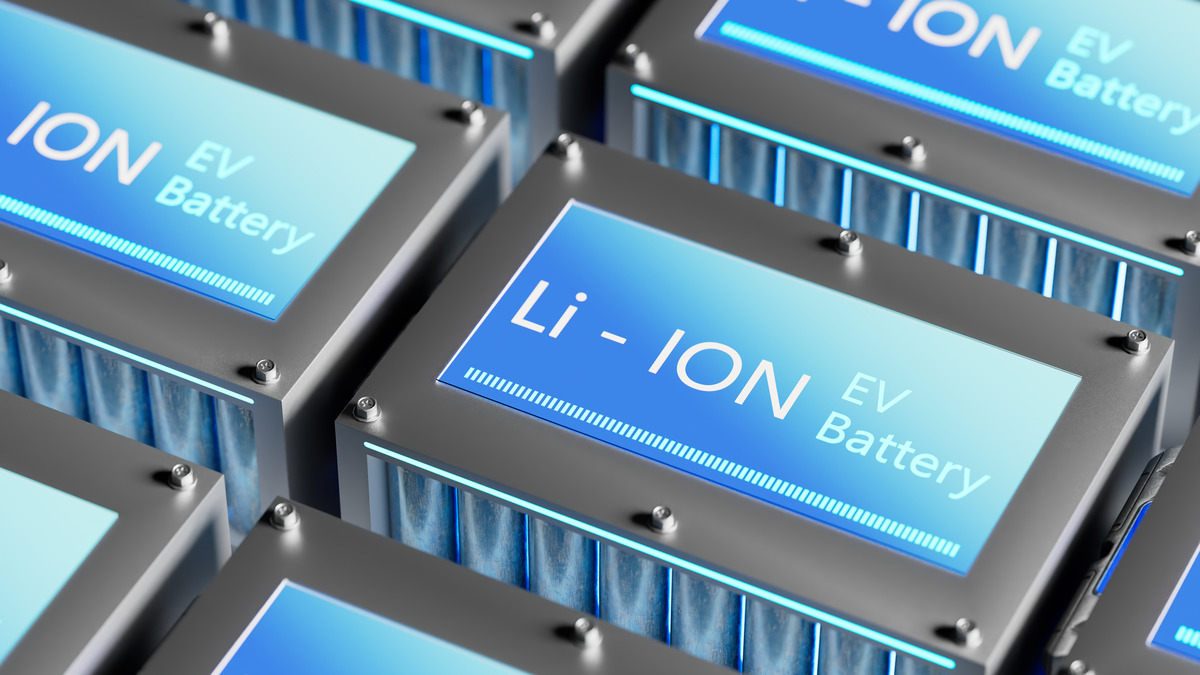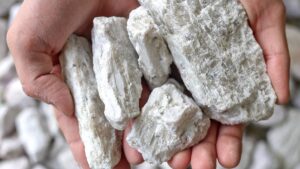Shaaki-t Off: Ken Brinsden says Canadian mine study shows lithium prices have to rise

Pic: Getty Images
- Ken Brinsden says lithium prices are likely to rebound as Patriot Battery Metals drives to deliver its Shaakichiuwaanaan project in Canada
- A PEA, a Canadian variant of a scoping or pre-feasibility study, put a US$487 million price tag on an initial 400,000tpa development at deposit in the James Bay region of Quebec
- Brinsden says Canadian deposits are well-placed to benefit from lithium supply chains that are diversified from China
Lithium identity Ken Brinsden says prices cannot stay where they are long term as the West wrestles to take control of lithium prices off China.
The former Pilbara Minerals (ASX:PLS) boss’ new company Patriot Battery Metals’ (ASX:PMT) put the hard numbers around its Shaakichiuwaanaan project in Canada yesterday, placing a US$487 million price tag of the first stage of the 24 year, 400,000tpa spodumene development in a preliminary economic assessment.
That works with a 3.6 year payback at total cash costs of US$560/t and lithium pricing of US$1500/t SC6 or US$1375/t for the 5.5% Li2O concentrate Patriot plans to produce at the Quebec mine.
Current SC6 prices sit at just US$770/t according to Fastmarkets, a result of oversupply last year partly resulting from Chinese investment of low grade resources in China and Africa and lower than expected growth in the electric vehicle market.
Brinsden says at those prices Shaakichiuwaanaan, one of the best undeveloped hard rock lithium asset globally, would not be developed in its studied form. Alternatively, it could be developed as a high grade underground operation leveraging the Nova Zone, a part of the CV5 deposit which contains world-leading grades of over 2% Li2O, but in doing so, Patriot could be leaving in the ground valuable metal needed to service future EV battery and energy storage demand.
That highlights the problem facing lithium markets globally and underlines why the mining doyen believes prices – down ~75% in the past year – are bound to head higher.
“Perversely, our PEA in a manner of speaking, actually shows what’s required in the industry to incentivise new supply,” Brinsden told Stockhead.
“Honestly, we’re one of the premier development projects globally.
“If it was today’s price, you’d be second guessing, firstly, whether you develop or alternatively, what project you develop and it’s definitely not going to be the same scale.
“The PEA is evidence that the price has to be higher. Everybody knows our project is one of the good ones, and yet you wouldn’t choose to develop that project if you had to execute today.
“In our case it would be a high-grade option, which not many projects around the world have got the ability to deploy.”

Fast-moving
While prices are depressed, the riches on offer if they turn around are substantial. FID is only planned for the James Bay region project in 2027 with first product due in 2029.
In a positive market, Shaakichiuwaanaan could be doubled in capacity to 800,000tpa via a second stage US$310m investment that would involve the underground development of Nova – almost 22Mt at over 2.1% Li2O, grades only seen at the world class Greenbushes mine in WA’s South West – and a doubling in concentrator capacity from 2.5Mtpa to 5Mtpa.
It may be hard to see prices recovering off their lows today. SQM CEO Ricardo Ramos, whose Chilean-based and New York listed company is the second largest producer in the world, said after reporting a 63% drop in profit this week the mining giant saw the current pricing trend continuing into the second half of 2024.
But Brinsden warned markets could turn quickly in the volatile sector.
“In the last cycle at Pilbara Minerals, we sold our lowest price cargo at about US$350/t,” he noted.
“We were roughly cash flow breakeven. So, clearly, at that time, you wouldn’t have developed Pilgangoora, but it was only three years later that it made $900 million cash flow in a quarter.
“It’s an unbelievable market. And ultimately, that’s what you’re in the game for – the long run price. And the long run price indicates the project’s going to be a good one.”
Break away
Brinsden says recent pricing moves show the West needs to break away from China and become self-sufficient in its lithium and electric vehicle supply chain.
Recent weakness in prices and inflationary pressures on US carmakers has seen China steal the march, with battery costs and EV cost falling quickly. There are now concerns Chinese carmakers can undercut American, Japanese, Korean and European producers who previously had the edge on quality and competed on cost.
One of the attractive aspects of the Shaakichiuwaanaan project is tax credits for upstream production, not available in WA where new producers like Liontown Resources (ASX:LTR) have called for royalty relief to help them get established but are yet to receive confirmation from government that support will be forthcoming.
“It’s a good incentive to help build out the supply chain. Those same credits are available for the stuff that’s happening downstream as well, chemical plants and cathode plants and the like,” Brinsden said.
“And my view is that there will be more, because it’ll become increasingly obvious, if it’s not already in the West, that China’s dominance of the supply chain is actually a really big problem, and it does have to be diversified.
“I think the quote I’ve used historically is they’ve been asleep at the wheel, and in the last decade China’s created a level of dominance in most of the critical minerals industries, and lithium is no exception.
“The West should capitalise on our high quality resources, and that becomes our competitive advantage in building out these new supply chains.”
While it remains the world’s largest supplier of lithium raw materials, WA miners have recently looked elsewhere at assets where they can make a clean break from the Chinese supply chain, for instance in Pilbara Minerals’ recent deal to acquire Brazilian explorer Latin Resources (ASX:LRS).
While he built his fame as a miner that largely supplied the Chinese market, Brinsden says the symbiotic relationship between WA’s operations and Chinese investors meant other jurisdictions could be preferable in a diversified supply chain.
“If you build a spodumene mine in Western Australia, you know you can land those tonnes on China’s doorstep and somebody will chemically treat it. But that’s not the future of the industry,” he said.
“I would argue the next decade is all about reconstructing supply chains so that they are diversified away from China.
“I don’t want to talk down what’s happening in Western Australia, far from it. There are some mines that have already and will be competitive. I guess the catch is, continuously sending it to China is not going to be a solution for the next decade.”
He noted the only material out of WA today that is clearly compliant for tax incentives offered to carmakers under the US Government’s Inflation Reduction Act is a small portion of Pilgangoora’s offtake sold to Korea’s POSCO.
Counter-cycle
The Latin Resources deal has shown we might be close to the bottom of the cycle when accretive M&A takes place, with consolidation occurring ahead of a new up-cycle.
It’s not the only bidding in recent weeks. It was revealed a few days ago that Core Lithium (ASX:CXO) had made a non-binding $6.5m all scrip bid for Charger Metals (ASX:CHR), which holds ground near Core’s mothballed Finniss lithium operations. CHR has already bounded past the rejected 8.4c a share price as investors bay for higher offers.
C$639 million PMT was flat at 52c after initially lifting on yesterday’s PEA released, around 73% off its 2023 highs.
But at the same time, enthusiasm to fund juniors exploring the once hot James Bay region around PMT’s Shaakichiuwaanaan has waned, with the price drop also prompting major Arcadium Lithium (ASX:LTM) to pause work on its own James Bay project.
Ironically, the lithium bear market could open M&A opportunities for PMT or make it a target for bottom-feeding predators. The world’s top lithium producer Albemarle notably took a ~5% stake in a C$109m investment in 2023 but let a deadline on a downstream refining study lapse as it tightened the belt earlier this year.
Brinsden acknowledged PMT needs to put more ‘meat on the bone’ at Shaakichiuwaanaan, where an exploration target if converted into resources could put the deposit into a scale akin to Pilgangoora, as a form of defence in a market where counter cyclical M&A is emerging.
He also sees the opportunity to for more discoveries to be made in the James Bay region.
“Shaakichiuwaanaan in itself has shown that it’s elephant country, and that might very well inspire others to continue with exploration,” he said.
“There’s no doubt about it, it’s pretty amazing geology and and who’s to say that there aren’t actually more discoveries to be made? We certainly believe that’s the case on on our ground. ”
Related Topics

UNLOCK INSIGHTS
Discover the untold stories of emerging ASX stocks.
Daily news and expert analysis, it's free to subscribe.
By proceeding, you confirm you understand that we handle personal information in accordance with our Privacy Policy.








